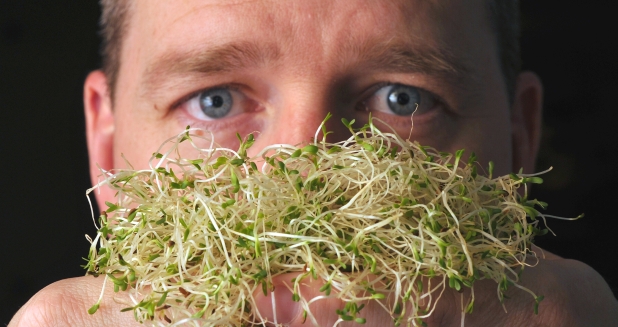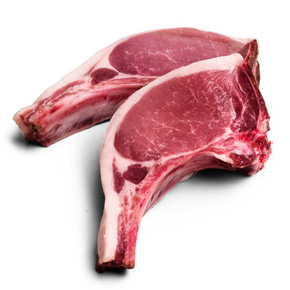Canberra’s cute enough; really boring on weekends, even if Elvis Costello is playing in a park. In the late 19th century the Australians decided they needed a federal capital, and eventually picked a sheep farm halfway between Melbourne and Sydney.
Like Washington, D.C., the Australian Capital Territory is a unique government structure all its own. Although located within the Australian state of New South .jpg) Wales, which includes Sydney, ACT and the federal capital of Canberra can apparently make its own rules – at least regarding restaurant inspection disclosure.
Wales, which includes Sydney, ACT and the federal capital of Canberra can apparently make its own rules – at least regarding restaurant inspection disclosure.
A senior health official told the Canberra Times that Canberrans must not be told which of the city’s restaurants were deemed too unhygienic to serve food, because naming them would undermine the rule of law.
Earlier this year, ACT Health suppressed the identities of up to 10 eateries it shut down in 2010, saying naming the businesses could cause them ”unreasonable” harm.
The Canberra Times, which had sought access to the list under freedom of information law, appealed against the initial decision, citing interstate and overseas governments that used ”name-and-shame” policies to encourage food safety.
Health Minister Katy Gallagher agreed in February to consider introducing laws similar to those in NSW, where food businesses that fail hygiene inspections are named on a government website.
However, the deputy head of the ACT Government’s health directorate, Ian Thompson, has now ruled out revealing last year’s worst offenders, saying to do so might unfairly influence a trial.
In reviewing the earlier decision to censor the businesses’ names, he dropped the argument that disclosing their identities would unreasonably affect them.
But he invoked his power under the FoI Act to suppress documents ”affecting enforcement of the law and protection of public safety.”
The censored reports show officials issued 63 warnings in 2009 and 2010 to businesses that failed hygiene checks. Inspectors also banned up to 10 eateries last year from serving food, because they had either ignored warnings or posed ”a serious danger to public health”.
Mr Thompson allowed only one of them Dickson’s Domino’s Pizza store to be named, because it had already faced charges in court. That franchise now has new managers.
The reports’ most common criticism was that kitchens lacked a sink and soap for washing hands.
However, several of the documents described filthy and vermin-infested workplaces, where rotting scraps were piled behind fryers and meat was stored in dangerously .png) warm fridges.
warm fridges.
Meanwhile, Restaurant and Catering Australia has panned the effectiveness of name-and-shame registers such as NSW’s, saying it sometimes punishes innocent businesspeople. Chief executive John Hart said yesterday the NSW laws were flawed because they ”have no gradation.”
However, Mr Hart said a so-called ”scores-on-doors” or hygiene ratings scheme would help the public.
.jpg) ping-pong where the consumer discards the health authorities and the authorities send us back to our own behavior.”
ping-pong where the consumer discards the health authorities and the authorities send us back to our own behavior.”
 without proper knowledge or testing. Although dog saliva may have antibacterial properties and Nerve Growth Factor, you can’t conclude from lab-controlled experiments, using purified concentrated compounds, that a dog licking a wound is beneficial.
without proper knowledge or testing. Although dog saliva may have antibacterial properties and Nerve Growth Factor, you can’t conclude from lab-controlled experiments, using purified concentrated compounds, that a dog licking a wound is beneficial..jpg) Wales, which includes Sydney, ACT and the federal capital of Canberra can apparently make its own rules – at least regarding restaurant inspection disclosure.
Wales, which includes Sydney, ACT and the federal capital of Canberra can apparently make its own rules – at least regarding restaurant inspection disclosure..png) warm fridges.
warm fridges..jpg) Medical School who was not connected with the new research.
Medical School who was not connected with the new research. Although it can be unnerving.
Although it can be unnerving. and left an abscess on his brain.
and left an abscess on his brain..jpg) misdemeanor in April after authorities viewed the video.
misdemeanor in April after authorities viewed the video..jpg) a mixture of year old woodchips and leftover sprouts. We have never had to find an outside source for compost. As long as you keep the sprouts healthy, there is no need for using chemicals. Healthy growing materials also mean an end product that is higher in vitamins, minerals and enzymes.”
a mixture of year old woodchips and leftover sprouts. We have never had to find an outside source for compost. As long as you keep the sprouts healthy, there is no need for using chemicals. Healthy growing materials also mean an end product that is higher in vitamins, minerals and enzymes.” Coastal Health, said, "This was an outbreak with a high attack rate. Our future advice to the race organizers is to inspect the route prior to the race to ensure it is not littered with animal feces, and not end the race at the horse ring. If there is any horse poop, they have to remove it."
Coastal Health, said, "This was an outbreak with a high attack rate. Our future advice to the race organizers is to inspect the route prior to the race to ensure it is not littered with animal feces, and not end the race at the horse ring. If there is any horse poop, they have to remove it.".jpg) 200,000 cases of chlamydia, genital warts, syphilis, gonorrhoea and herpes in the 15-24 year old age group in England.
200,000 cases of chlamydia, genital warts, syphilis, gonorrhoea and herpes in the 15-24 year old age group in England.